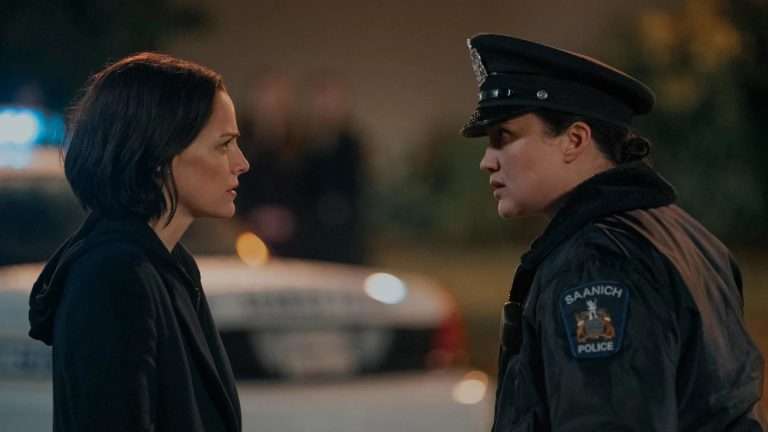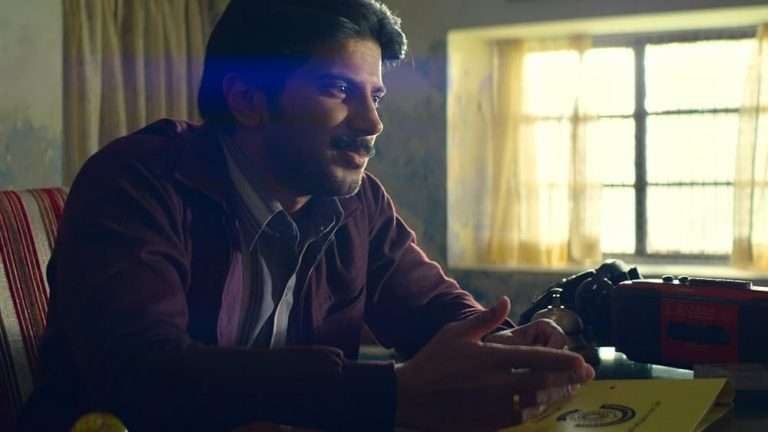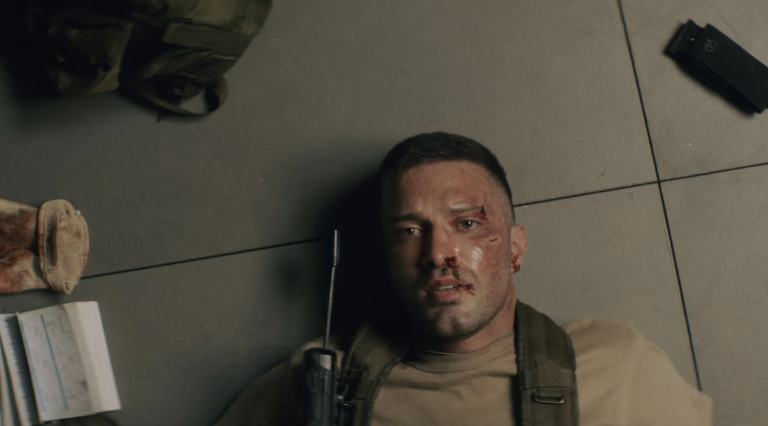In the modern horror thriller A Quiet Place, a family of four must navigate their lives in silence after mysterious creatures that hunt by sound threatens their survival. If they hear you, they hunt you.
SILENCE IS SURVIVAL
When John Krasinski first read an early draft of the script for A Quiet Place by screenwriting duo Bryan Woods & Scott Beck (Nightlight), the terrifying premise hit home especially hard. Krasinski’s wife, Emily Blunt, had just given birth to their second daughter and he was already spending his nights in the whispering quietude and anxiety of new parenthood. In that atmosphere, he was utterly transported by the idea of a family’s nerve-jangling, high stakes search for safety, as well as their vital need for connection, in a world where so much as a single cry or heavy footstep could bring instant demise. The story seemed to encompass the most virulent fears of parenthood—turned up to 11.
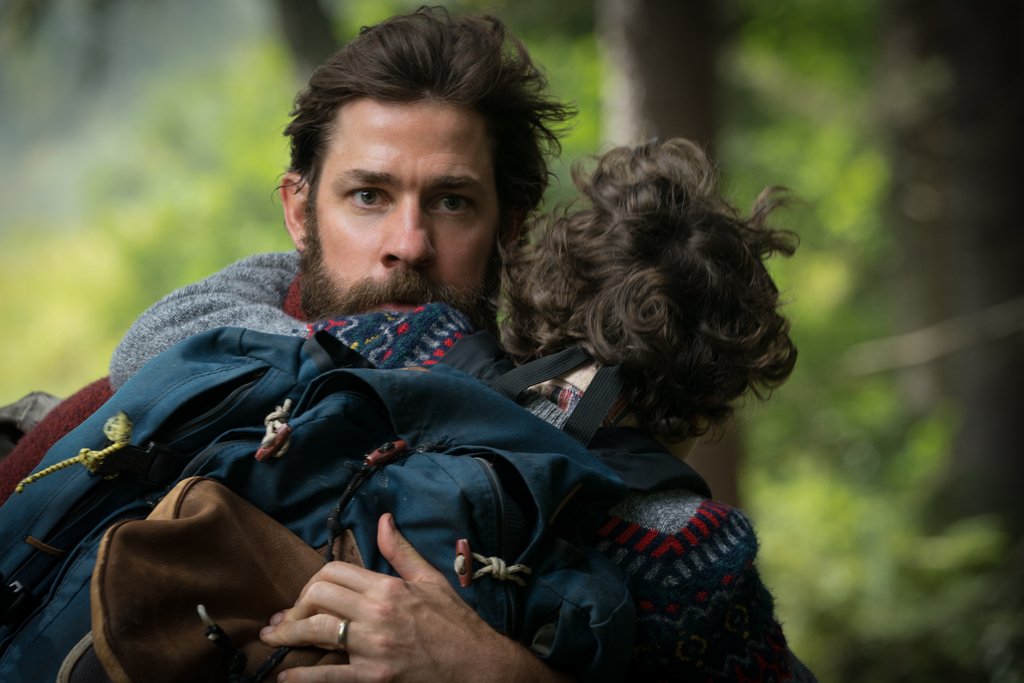
At the time, Krasinski was equally known as a dramatic actor (with recent roles in Detroit and 13 Hours: The Secret Soldiers of Benghazi), a writer (whose screenplays include Gus Van Sant’s Promised Land) and a rising director (who made his debut with Brief Interviews With Hideous Men and followed by The Hollars). But with A Quiet Place, Krasinski was compelled to jump into all three roles, his first major feature wearing that whole wide range of hats. As he tackled the re-write of Woods and Beck’s high-concept story, he also saw a chance to play in a unique way with the power of the horror genre. Sure, he wanted to build dread second-by-second in the tradition of breathless thrillers.
But more so, he wanted to create a battle between sound and silence, and between fear and love, that would be a tense, emotional and participatory experience for audiences.
Krasinski recalls what first captivated him: “I was already dealing with all the fears of being a new father—fears of how to keep my daughters safe and how to be a good dad—when this came to me and so I related to it on a deeply personal level. I felt that within the basic story was such an interesting, and terrifying, metaphor for what it takes to be a parent. I was an open nerve emotionally then, so it was a very powerful time to start imagining how two parents might try to protect their children by doing the impossible, by living without making a sound. It just made my imagination explode. There was so much about the idea that I wanted to explore.”
The more he tried to envision being a father in an apocalyptic time, the more frightening, and potent, the idea seemed. The story was full of big, disarming jolts but there was also poignancy to a family fighting to communicate no matter how bad things get. “In ordinary life you try to make sure your kids are happy, healthy, well fed, taken care of and educated, which is a lot to worry about. But in this nightmare world, the stress of being a parent is that times 10,000,” Krasinski observes. “In the Abbotts’ world with one false step, you could lose a loved one, something they know all too well.”
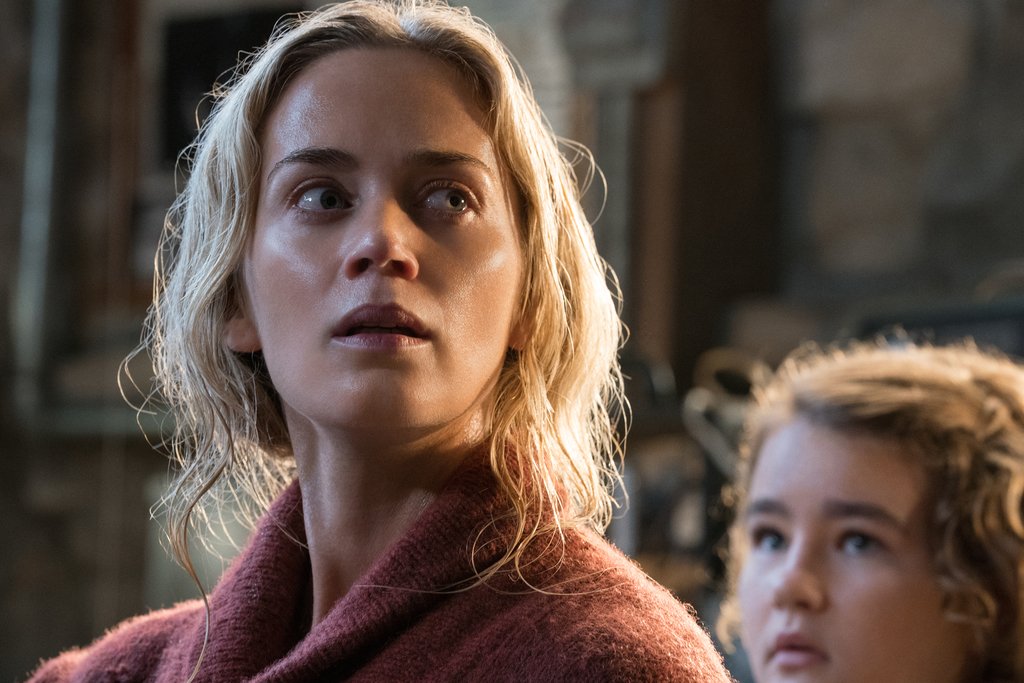
That the film was bursting with creative possibilities for performances, design and effects also called to Krasinski. “I was excited to explore how to tell this story in the most exciting way using the balance between silence and sound,” he explains.
Horror is a fresh genre for Krasinski as a writer and director, but from the start he came at it in his own emotionally invested way. “Really, my favorite movies, horror or otherwise, are those that have a strong, underlying metaphor,” he says. “For instance, Jaws is one of my favorite movies of all time. But to me, Jaws wasn’t really about a shark. It was about three men who had something to overcome, and the shark was the catalyst. That’s how I saw this story. It’s a scary movie, but it’s scary because it’s about a real family. And I felt I had the personal experience to bring to that.”
Like all horror movies, A Quiet Place starts with a provocative scenario straight out of your worst nightmares. But from there, Krasinski set for himself a different direction: to link love and fear, and invest the audience actively in both. The idea was to have the sense of horror mount in direct correlation with the viewer’s growing attachment to the Abbotts.
“If you care about the Abbotts, then you will be surprised, you’ll be sad when they’re sad and you’ll be desperately afraid when they’re desperately afraid. So that became the core of what I wanted to do: to let audiences fall in love with what it is that makes the Abbotts such a beautiful family,” Krasinski explains. “You become scared for them in the most intense way because you can imagine yourself in their place.”
A big part of putting the audience in the Abbotts’ place became using auditory cues in innovative ways. As Krasinski dug deep into his re-write of the script, he started making elaborate lists of everyday noises, dividing them between “safe sounds” and “unsafe sounds.” It was both thrilling and revealing to conjure up a world so opposite from our own distractingly noisy one, a world in which sound is redefined as dangerous, but also emphasized as a part of the human experience.
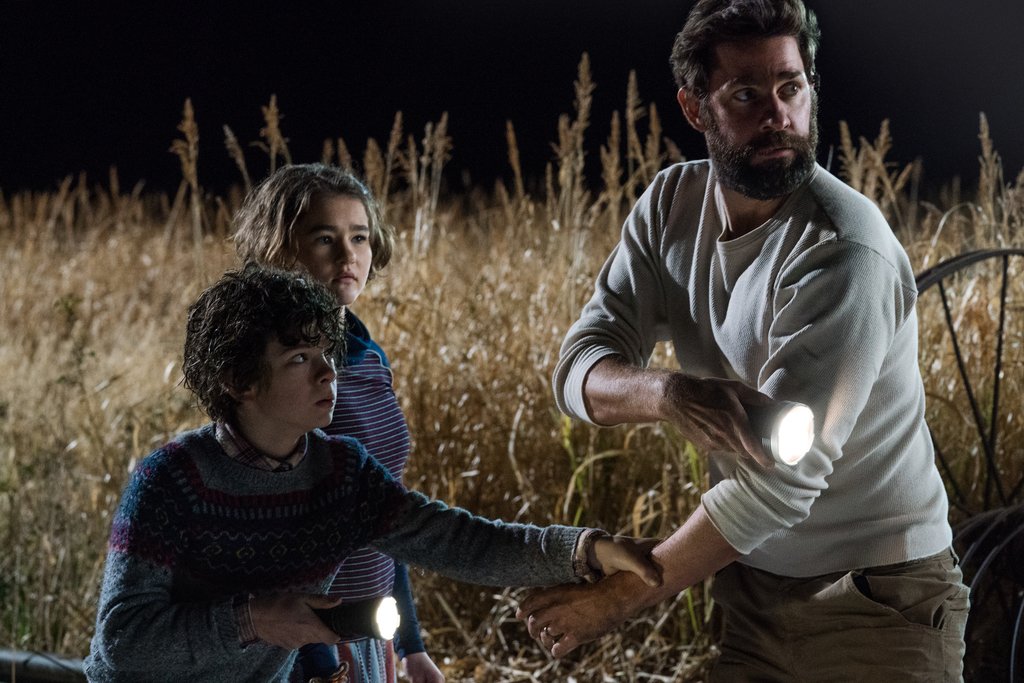
“I really wanted to come to terms with where the threshold would be that you can make a sound and the being that is out there won’t hear you. I spent a lot of time researching every kind of sound a family might make on an isolated farm and then I started thinking about all the ways the family might figure out to dampen those sounds. It was an incredibly fun, imaginative process.”
All the ordinary creaks and hums of daily life, the ones we take for granted, suddenly took on new meaning for Krasinski. “I started listening to everything,” he confesses, “from silverware clinking on plates to the dropping of your shoe when you take it off. It became kind of a game in our house where my wife [Emily Blunt] and I would try to be silent and turn to each other real quietly if we ever made a noise, and say ‘you’re dead.’ It turned out to be a great means of preparation.”
Krasinski even had a way of testing which ideas would most rattle audiences to their core. “Often it was Emily and me sitting around imagining situations and If Emily said, ‘I’m so terrified, I don’t even want to think about that situation,’ I would say, ‘that’s going in the script.’”
To counter the pervasive threat that seems to always be listening 24/7, the Abbotts devise elaborate ways to keep sound at bay, including laying down sand paths to keep footsteps muted, painting floorboards to avoid creaks and creating a special lighting system to communicate. “A lot of the fun of the writing was seeing how far we could take the idea of staying quiet, from having the Abbotts communicating with different colored lights to laying out sand so that they can walk more quietly,” Krasinski says.
Because the Abbotts’ daughter Regan is deaf, they already know American Sign Language (ASL), a source of their ability to survive. But as the script progressed, Krasinski also spent a lot of time honing the Abbott family’s multiple strategies for communicating. With two lonely children facing an extremely unpredictable future and another child on the way, the Abbotts have an urgent number of things to communicate about, but their means for reaching one another has become limited.
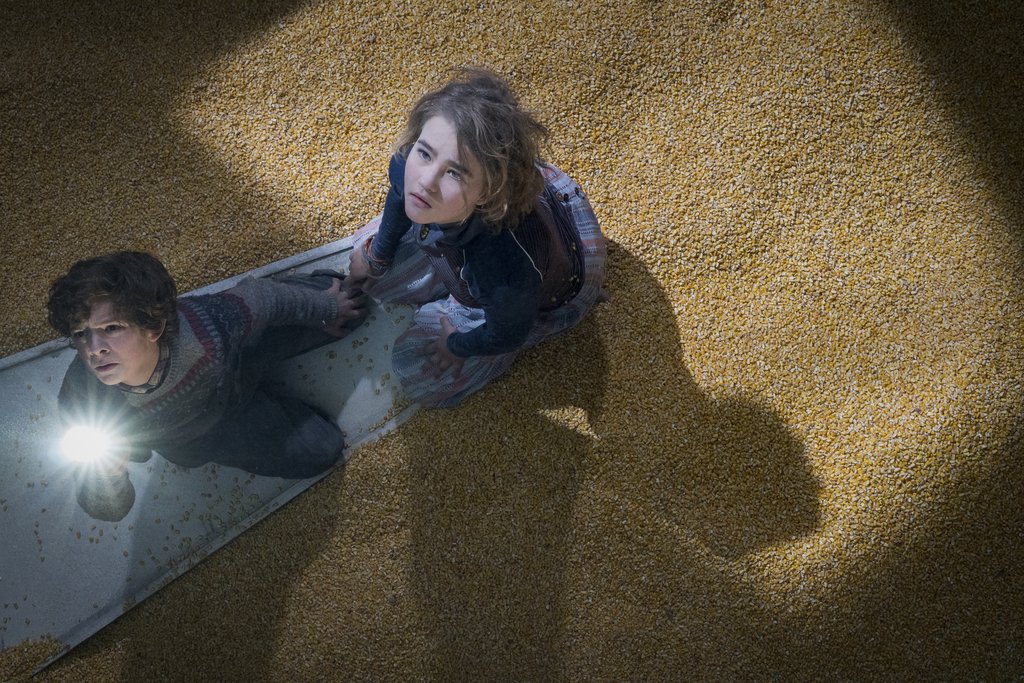
The logistics of how the Abbotts have stayed alive were essential. But for Krasinski, the film’s pendulum of
unbearable tension and exhilarating release was just as focused on family dynamics. One of the biggest challenges of the writing was figuring out how to evoke roiling emotions of frustration, apprehension, grief, defiance, need and love, atop the dread of being surrounded by an incomprehensible, all-hearing enemy, using few words. He found it was about constantly blending the most basic human emotions into a world in which humanity has been broken.
“I was especially interested in the more intimate scenes of the Abbotts just being together as a family,” Krasinski says. “And later, on the set, it was exciting for the actors to find these really beautiful moments that happen between people beyond dialogue. The communication becomes about the things most important to us: love, caring and the fear of what the next day is going to hold.”
The writing process became a chance for Krasinski to hone his directorial direction—and the film’s unique visual language—before he ever stepped foot on set. “The best part about rewriting the script was that I was thinking about the directing the whole time,” he says. “I knew exactly what I wanted to shoot as I was writing it and even what angles I would use and things like that. It was a very unique experience for me to put all the directing ideas into the script.”
As production moved ahead, having the support of the highly experienced team at Platinum Dunes, who first brought him the material, bolstered Krasinski’s vision. Michael Bay, Andrew Form and Brad Fuller are not only three of the most powerful filmmakers in the business, they’ve also shown a passion for the horror genre with such original films as The Purge and Ouija series as well as remakes of such classics as The Texas Chainsaw Massacre, The Amityville Horror, Friday The 13th and A Nightmare on Elm Street.
Sums up Krasinski: “I feel really lucky that the film came together the way it did with this team. Everyone was so committed, from the producers to our cast to our crew. I think everyone came on board believing that if we could pull this idea off it could be something really special.”
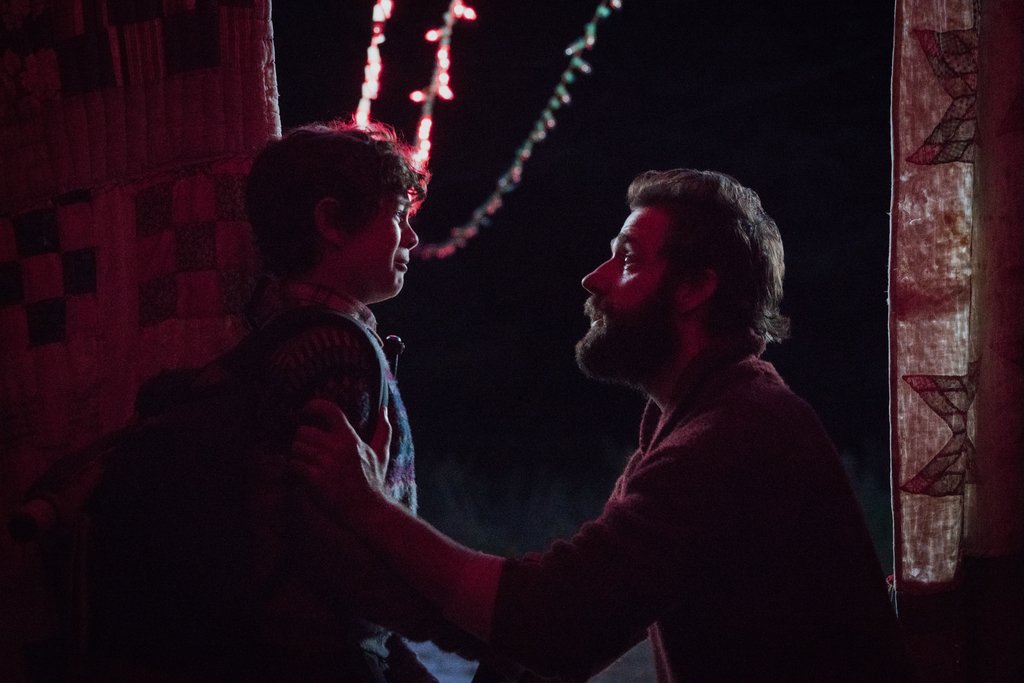
THE ABBOTTS
Early on, Krasinski gave his wife Emily Blunt—the British actress who has become much sought after following indelible and varied roles in The Devil Wears Prada, Into The Woods, Sicario and The Girl on the Train—his draft of the script for A Quiet Place. As soon as she read it, she suggested they play the roles of Lee and Evelyn Abbott together, adding a layer of stark realism and candid tenderness that wouldn’t otherwise be possible.
“What I fell in love with in the screenplay is that I felt it touched on some of my deepest fears as a mother of not being able to protect your children. The stakes are so sky-high in this story I was racing to read to the end,” recalls Blunt. “Ironically, before I read the script, I had suggested to John that a friend of mine might be right for the role of Evelyn. But as I read, I thought, ‘never mind that, I need to play this role.’ I just loved the depth and beauty of the story, which goes beyond the horror movie atmosphere. And John and I had never worked together so that was exciting.”
Krasinski was thrilled by his wife’s reaction, but also a little daunted by the prospect of their very first professional partnership on a film. “We were about to live through our biggest fears as parents together on screen, which was a bit crazy,” he admits.

Yet, even though it was what Krasinski describes as “a very intense experience,” both found it to be a revelation. “Working with my wife will go down as probably the best time I’ve ever had in my career,” says Krasinski. “We usually keep our careers completely separate, but we’re each other’s biggest fans. We each have our own process and we weren’t sure how they would intermingle, but it turned out to be absolutely the most fun I’ve had. Emily is a tremendous and sensitive actress, and it’s been amazing for me to work so closely with someone I admire so much.”
Once it was agreed that Blunt would play Evelyn, she and Krasinski couldn’t stop talking about the Abbott family—about who Lee and Evelyn were before everything changed and how the catastrophic times they are facing has changed them.
“It’s a very weighty world but they try to stay focused on raising their family,” emphasizes Blunt. “They are constantly afraid. And they’re also a family dealing with a lot of grief and guilt. What I find fascinating is that there’s such an urgent need for them to communicate, yet communicating is so hard in a world where sound is danger.”
It definitely felt risky to Blunt to conjure up so many high-anxiety emotions while raising her own two young children, but it also gave her precious insight into Evelyn. She understood why Lee and Evelyn don’t need words to reach one another in this time when everything else is in doubt. “The timing meant John and I were able to approach these roles with great vulnerability,” says Blunt. “We talked a lot about the distinct roles Lee and Evelyn have in the family. Lee is the one who feels responsible for their survival, no matter what it takes. But Evelyn wants to do more than survive: she wants to teach her kids to thrive in this world. So you get two sides of how parents handle grief, trauma and danger.”
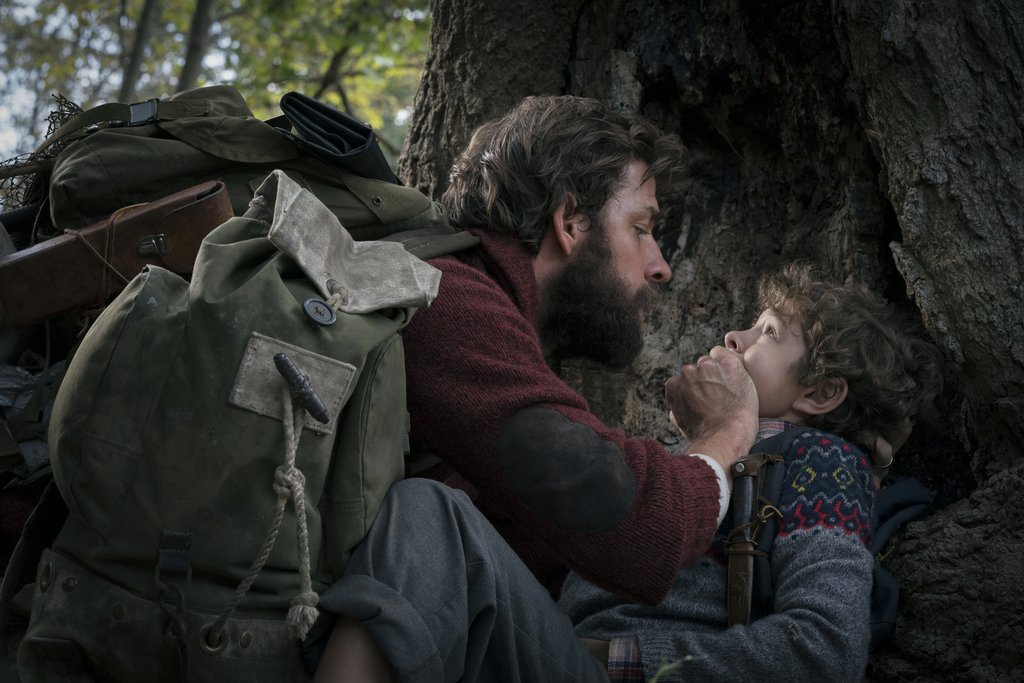
She continues: “With Lee, you have someone who is a very, very old school kind of guy, which I don’t think John is necessarily. John’s much more open than Lee. Lee is the kind of man who shuts down emotionally, who turns his focus towards the need to protect and provide rather than dealing with his anguish. He’s a character who is in pain, but that is true of each of the four characters. Each is trying to overcome something, which makes it even more intense as they try to stay alive.”
As for Evelyn, Blunt wanted to explore her as a kind of unwavering maternal force. “I see her as just spectacularly loving and nurturing,” Blunt describes. “She has this drive to make sure she still raises good children. So she perseveres with school lessons, with making jokes with her kids in any way she can, with loving them and holding them, sometimes just drinking them in, yet wanting them also to have the room to become who they are.”
From the start, screenwriting partners Woods and Beck had inserted a fear-provoking twist into the story for Evelyn: her greatest joy, the fact that she and Lee are expecting another child, has come at a moment of peak endangerment.
“We were thinking about the worst thing that could happen to you when you have to be silent,” explains Beck. “Evelyn’s pregnancy became a driver of the story because it brings home the question of how you could go through one of the most strenuous circumstances in life, yet stay silent. It felt like such an impossible challenge that we wanted the Abbotts to have to try to figure it out.”
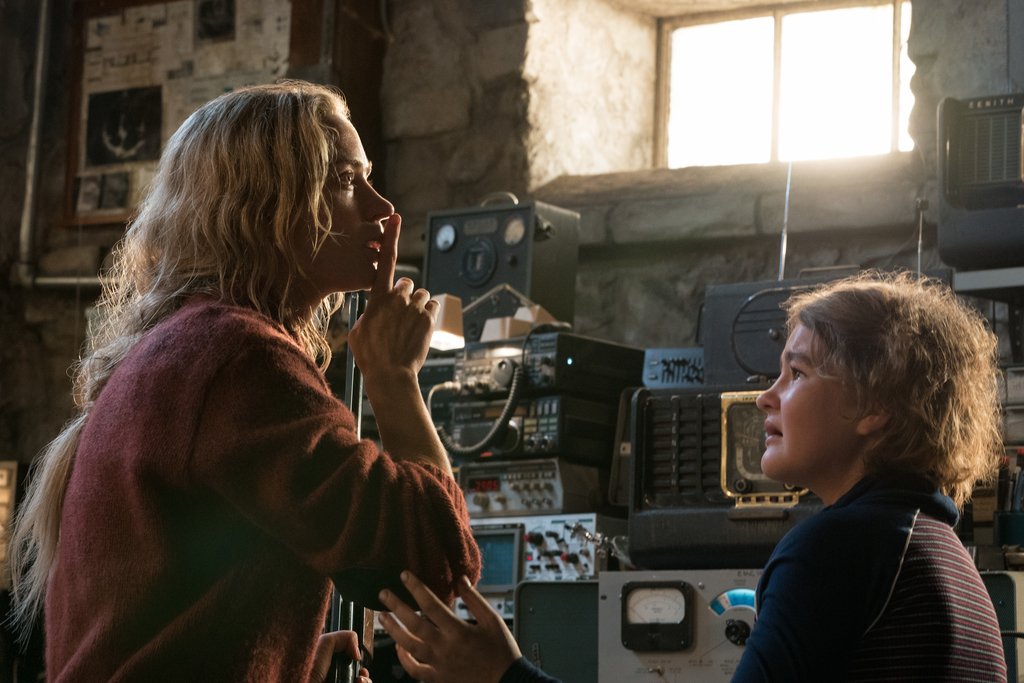
Adds Woods: “It’s also brings in a beautiful emotional component because this family has suffered a great tragedy and this birth means so much to them, even under these circumstances.”
Krasinski brought that idea even more to the fore. He notes that long before Blunt came aboard, he couldn’t help but think of his wife while writing the character who tries to hold her family together, facing the unknown with such grit and grace. “When you are writing something as intimate as a family going through the scariest time in their lives, the only person I could think of was of course Emily. But I always felt if she wanted to play Evelyn, it had to happen organically. So I didn’t ever say anything to her about taking the role, even if I quietly hoped that she might come to it on her own.”
Diving into Evelyn’s unusual circumstances, Blunt knew she would be roiling with split emotions over her impending labor. “Of course, she and Lee are thrilled … but their excitement is tempered by a deep fear. There are so many unanswered questions: How are we going to survive with a baby? How can you even give birth without making sound? What happens when the baby cries? They try to take every precaution they can think of by creating the soundproof safe room and finding creative ways to keep the baby quiet. But they also know they’re leaping into the great unknown.”
It was also a leap into the great unknown for Blunt and Krasinski, taking on these roles having never worked together professionally before. Both found that it only strengthened their bond. “I felt so valued by John creatively,” sums up Blunt. “I’ve always felt valued as his wife and mother of his kids, but this was about discovering that we could be on the same creative page. We were definitely nervous about it and it was a bit scary, but it turned out to be amazing.”
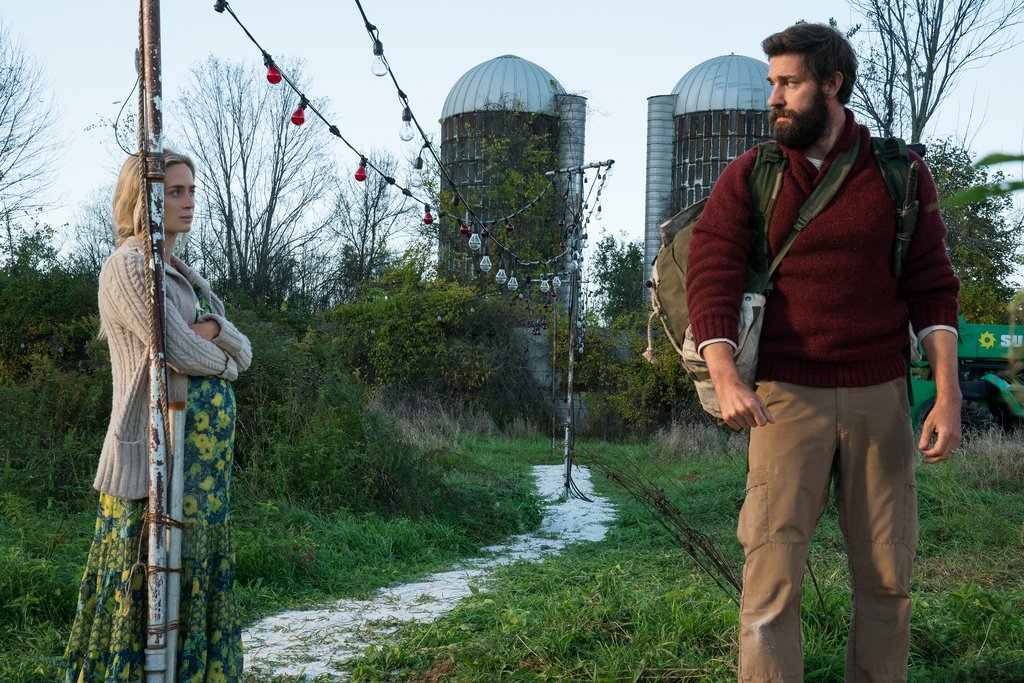
With Krasinski and Blunt set to play the Abbott parents, the crux of the casting was finding two young actors capable of creating dynamic, moving portraits of their two children—forced to grow up too soon, each yearning for independence in a world lacking in sound but filled with rules, regrets and incessant hazards.
One of the biggest challenges was finding the film’s Regan, the Abbotts’ daughter who is deaf. Krasinski was thrilled to discover teen actress Millicent Simmonds, known for her award-winning debut performance in the screen adaptation of Wonderstruck. He watched as Simmonds tapped directly into her individual experiences growing up as a deaf person to create Regan in a way that transcended what was even in the script.
“Finding Millie was one of the best things that ever happened to this movie,” says Krasinski. “Not just because she’s a phenomenal actress, and not just because she’s the wisest, most angelic person you can meet, but because she was so generous with her experiences and knowledge of Deaf culture and sign language. She was never intimidated, and she would say very directly this is how this Regan would do things and this is how we communicate.”
He notes that Simmonds’ natural instincts took everyone by surprise. “Millie was just built for this. I remember one of the first days we shot, she was walking across the bridge and I said to her: ‘all your angst, all your anger, all your guilt and all your feelings of being a black sheep in this family have to come out right now in this walk.’ And she just nailed it. She would tell me ‘I do feel frustrated and I do feel out of place sometimes.’ She understood Regan in ways I couldn’t. So I just kept telling her that I’m making this movie so that people who feel out of place will realize they can be superheroes.”

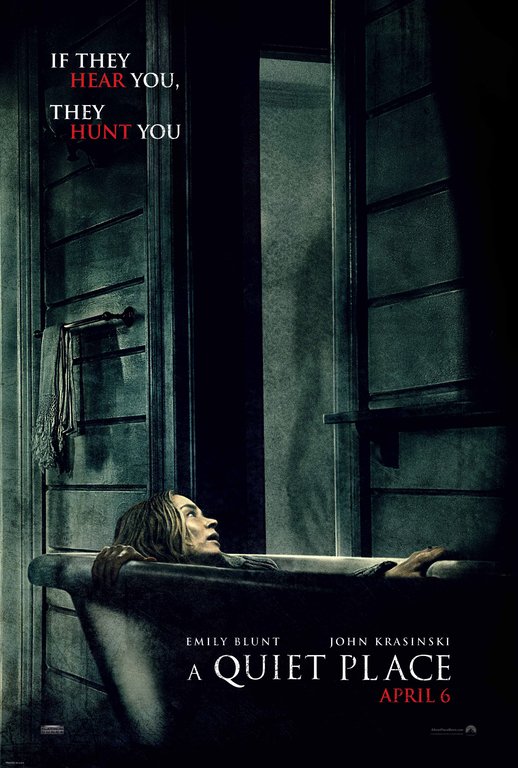


![[Watch] El Camino: A Breaking Bad Movie [2019] Netflix Teaser, Story & Release Date](https://79468c92.delivery.rocketcdn.me/wp-content/uploads/2019/08/breaking-bad-aaron-paul-jesse-pinkman-768x432.jpg)
![October [2018]: The Blooming Uncertainties of Selfless Love](https://79468c92.delivery.rocketcdn.me/wp-content/uploads/2018/04/OCTOBER2-768x322.jpg)
